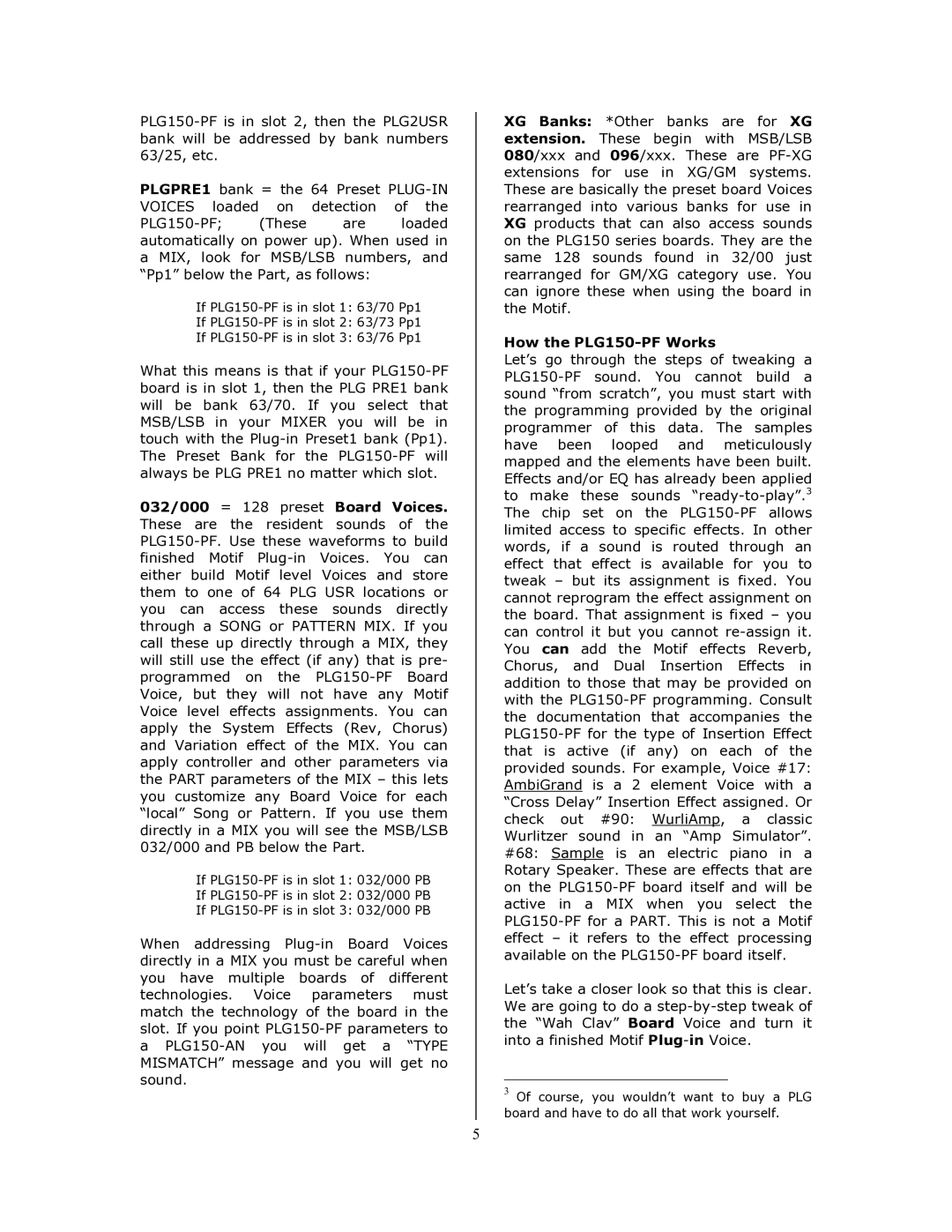PLG150-PF specifications
The Yamaha PLG150-PF is a high-quality plug-in synthesizer board that has gained recognition for its remarkable ability to simulate the sounds and textures of the classic Fender Rhodes piano. Designed for owners of compatible Yamaha synthesizers, this board allows musicians to expand their instrument's capabilities seamlessly, making it a valuable addition to any digital setup.One of the standout features of the PLG150-PF is its sophisticated physical modeling technology. This technology enables users to achieve realistic sounds that respond dynamically to playing nuances. The model recreates the characteristic timbre and behavior of a Rhodes piano, capturing the essence of its unique sound. It offers a variety of controls that allow musicians to tweak the tone, envelope, and effects, ensuring a custom sound palette that fits perfectly within their music styles.
The PLG150-PF is equipped with 128-note polyphony, providing ample headroom for rich chord voicings and layered parts. Musicians can perform complex arrangements without worrying about note dropouts. Additionally, this synthesizer board includes multiple velocity-sensitive layers, which enhance playability and expression. The board also features various effects processors, including reverb and chorus, allowing users to add depth and richness to their sound.
Another noteworthy characteristic is its compatibility with Yamaha's Advanced Wave Memory (AWM) technology. AWM enables the board to deliver high-quality samples while employing efficient sound synthesis methods. This approach not only produces impressive audio fidelity but also conserves system resources, allowing for greater performance capabilities in runtime.
The installation of the PLG150-PF is straightforward, thanks to its plug-in design that fits neatly into the expansion slots of compatible Yamaha synthesizers. It supports various models, including the CS6x, CS6R, and MOTIF series. Utilizing this plug-in board is as simple as selecting it within the synthesizer's menu system, making it easy for musicians to access its 풍부한 sounds quickly.
In summary, the Yamaha PLG150-PF stands out for its realistic emulation of the Fender Rhodes piano, equipped with physical modeling technology, abundant polyphony, and compatibility with Yamaha's AWM. With its user-friendly installation and robust feature set, it serves as an exceptional tool for musicians seeking to enhance their sonic palette and explore the rich world of electric piano sounds.

